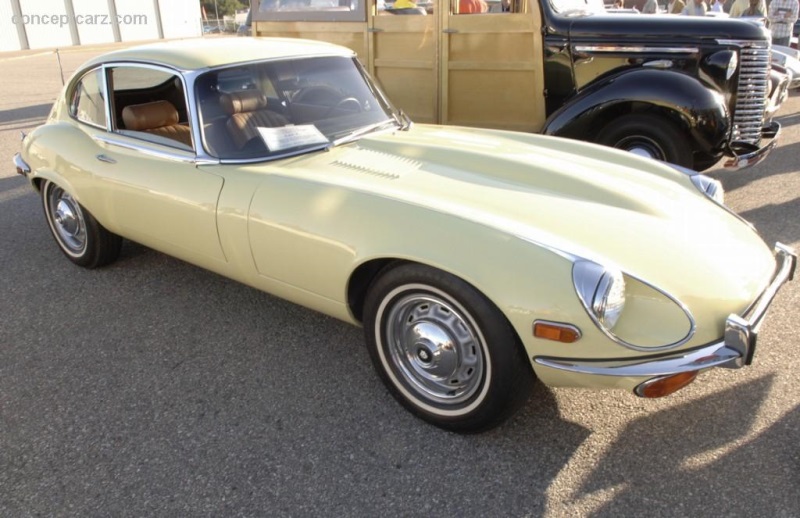The Jaguar E-Type (known as the Jaguar XK-E in the North American market) was produced from 1961 through 1975. The rear-wheel-drive grand tourer was offered as a two-seater coupe (FHC or Fixed Head Coupe) and as a two-seater convertible (OTS or Open Two Seater). In 1966, a '2+2' four-seater version of the coupe became available resting on a lengthened wheelbase. It was nine inches longer and the roof angles were different. 
Coupe
Chassis #: 1S72245 BW
Engine #: 7S3059 SA
View info and history
Auction entries : 1With 3.8-liter power and triple SU carburetors, the Jaguar E-Type was capable of achieving top speeds of 150 mph. When it was introduced in March of 1961, it was available solely for export, with the domestic market launch following four months later in July of 1961. R.J. Knight developed the independent coil spring rear suspension with torsion bar front ends. The power-assisted four-wheel disc brakes were in-board at the rear. The Jaguar marque had become one of the first vehicle manufacturers to equip production cars with four-wheel disc brakes as standard from the XK150 in 1958.In October of 1964, engine displacement increased to 4.2-liters, and although larger in size, it produced the same power as the 3.8-liter size. Torque, however, increased by approximately ten percent, from 240 to 283 lb-ft. To accommodate the 5mm larger bores, the 4.2-liter's block was completely redesigned, and the crankshaft received new bearings. Additional modifications included an electric cooling fan for the radiator and a new alternator/generator. 
Coupe
Chassis #: J712R28455
View info and history
Auction entries : 1The 3.8-liter Series 1 cars were distinguished from the 4.2-liter vehicles by their leather-upholstered bucket seats, a Moss four-speed gearbox that lacked synchromesh for the first gear (except for the very last cars), and an aluminum-trimmed center instrument panel and console. The console was changed to vinal and leather in 1963. The 4.2-liter cars received more comfortable seats, an all-synchromesh Jaguar-designed four-speed gearbox, and improvements to the electrical and braking system. A 'Jaguar 4.2-liter E-Type' badge on the boot of the car proudly proclaimed the powerplant lurking beneath the bonnet. The 3.8-liters cars had a 'Jaguar' badge. Series 1 cars, except for the late 1967 examples, had glass-covered headlights, tail-lights and signal lights located above the bumpers, exhaust tips under the number plate in the back, and a small opening at the front. Jaguar built a total of 15,498 examples of the Series 1 E-Type with the 3.8-liter engine, and 16,195 with the 4.2-liter powerplant. An additional 6,726 examples, unofficially known as the 'Series 1½,' were built prior to the production of Series II cars. Among the incremental changes applied to the Series 1.5 cars were twin cooling fans, adjustable seatbacks, and two (for the North American market) instead of three carburetors. 
Roadster
Chassis #: 700-1054
View info and history
Auction entries : 1In 1968, the E-Type received major revisions to comply with United States safety and emissions legislation, resulting in 'Series II' guise. They adopted enlarged side and rear lights, a thickened front bumper section, a wrap-around rear bumper, and a larger radiator intake. Interior changes included a collapsible steering column, new seats and head restraints, and rocker switches in place of the earlier toggles. Power steering and air conditioning were added to the list of available options. U.S-destined cars also received a steering lock which moved the ignition switch to the steering column, replacing the dashboard-mounted ignition and push-button starter. Series 2 cars were built from 1968 through 1971 and continued to be offered as a fastback coupe, roadster, and 2+2 fastback coupe. The 4.2-liter engine differed from the previous 'Series' by the use of polished cam covers and twin two-barrel Stromberg carburetors (replaced the previous three SU carburetor setup). Horsepower was now rated at 265 bhp and torque at 263 foot-pounds.The total production of E-Type Series II cars was 18,809 units with the most popular body style being the Open Two Seater 'roadster,' followed by 5,325 of the 2+2 coupe and 4,855 of the fixed head coupe. 
Roadster1971 was the start of Series III production which would continue through 1974. Among the most significant changes were the use of a new 5.3-liter V12 engine, standard power steering, uprated brakes, and several new optional items. (A small number of six-cylinder Series 3 E-Types were built and were featured in the initial sales brochure but due to a lack of demand, production quickly ceased - it is believed that six or seven cars were factory-fitted with XK DOHC 4.2-liter engines in Series 3 cars). An automatic transmission was now available, along with air conditioning and wire wheels. The V12 engine came equipped with four Zenith carburetors and delivered just over 270 horsepower. Body styles were now the 2+2 coupe and the OTS roadster. Production figures were similar for the two body styles, with 7,990 of the roadster and 7,297 of the 2+2 coupe. Both body styles rested on a 105-inch wheelbase with the 2+2 having a length of 184.4-inches and the roadster measuring 184.5-inches. Among the most distinguishable styling cues of the Series 3 E-Types are the large cross-slatted front grille, wider tires and flared wheel arches, four exhaust tips, and a 'V-12' badge on the rear. U.S.-destined cars wore large projecting rubber bumper overriders, with the European versions being much smaller. U.S. versions also wore side indicator repeats on the front wings. From its introduction in March of 1961, the Jaguar E-Type redefined the sports-car concept with sensuous bodywork, stunning performance, affordability, and a race-bred DOHC engine. Its lineage was formed by the Le Mans-conquering C-Type and D-Type sports races, and through three successive generations of 'XK' road cars, the Jaguar XKE continued the pedigree and desirability.
by Daniel Vaughan | Jun 2021
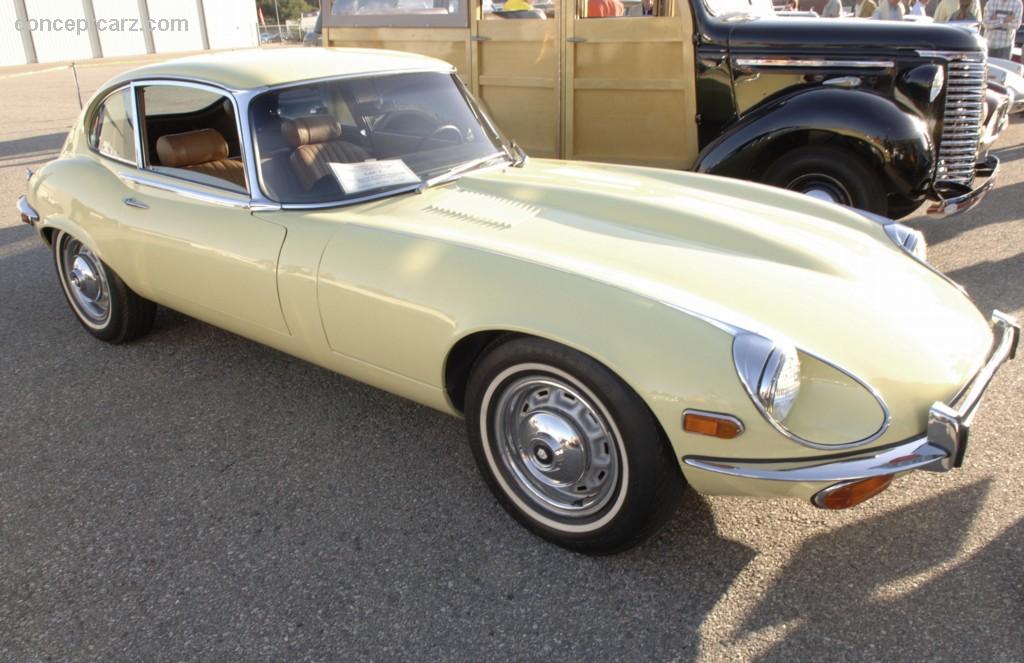
Coupe
Chassis #: 1S72245 BW
Engine #: 7S3059 SA
View info and history
Auction entries : 1
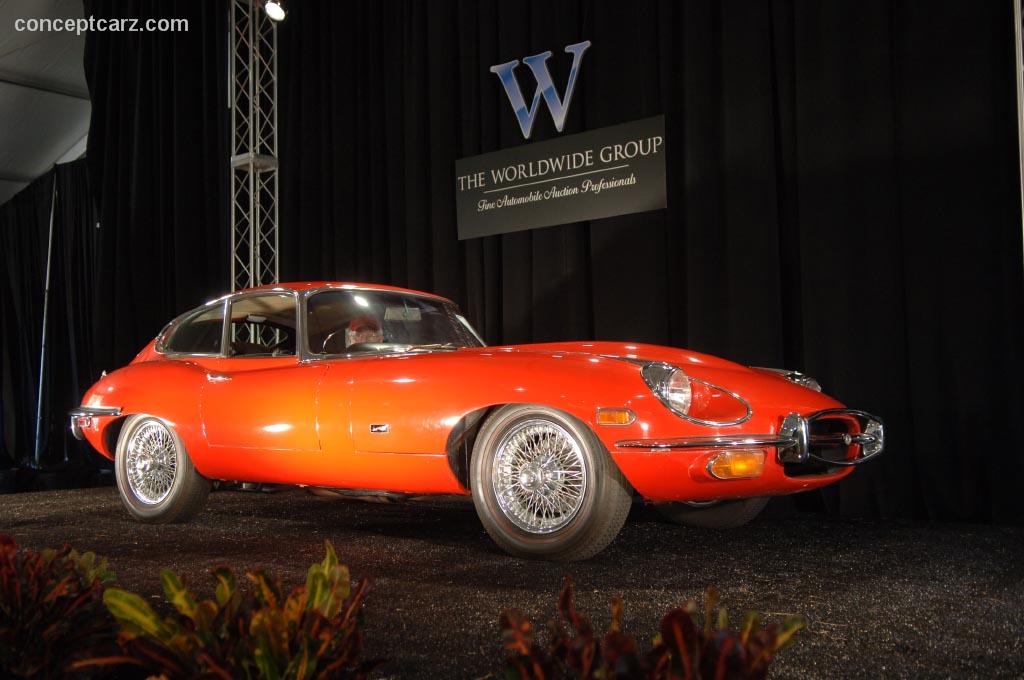
Coupe
Chassis #: J712R28455
View info and history
Auction entries : 1
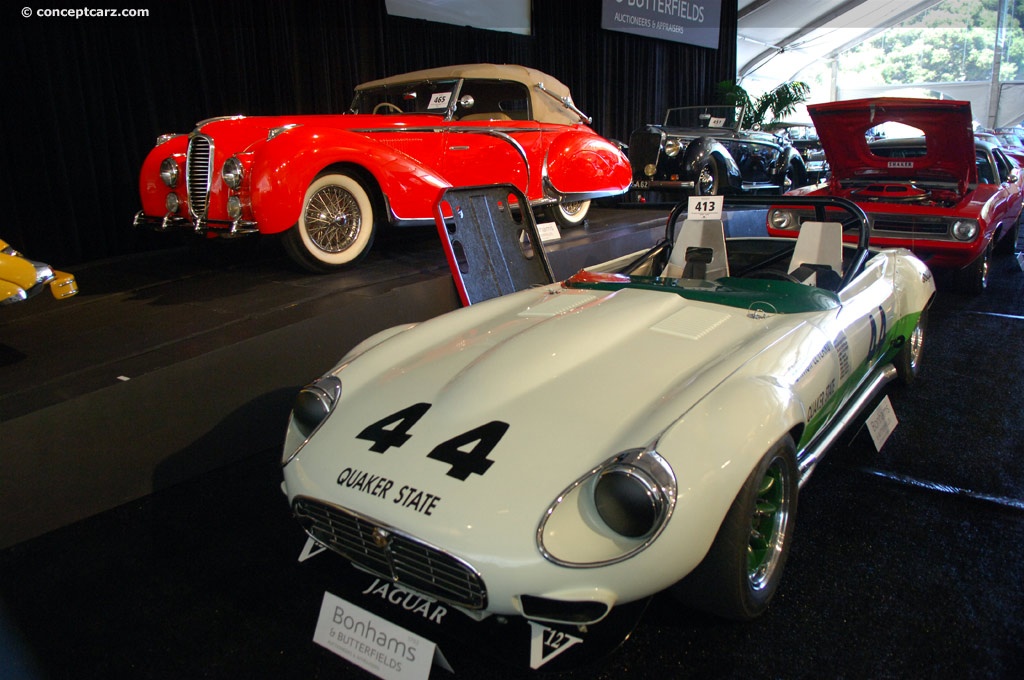
Roadster
Chassis #: 700-1054
View info and history
Auction entries : 1
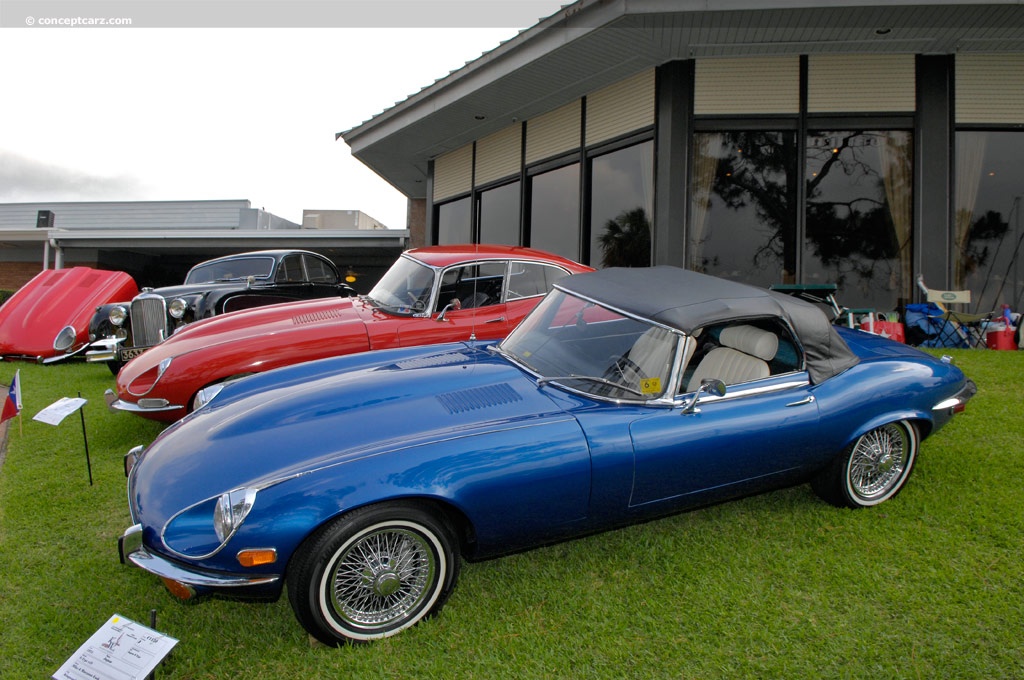
Roadster
by Daniel Vaughan | Jun 2021
Related Reading : Jaguar E-Series History
The Jaguar E type, also known as the XK-E, brought style and performance together to create a mass-produced supercar. The road-going sports car was conceived in 1956 as a replacement for the D-type. In March of 1961, the E-Type was officially introduced to the world at the Geneva, Switzerland Motor show. Its design was created by an aerodynamic engineer named Malcolm Sayer. The front-engine,....
Continue Reading >>
Continue Reading >>
Similar Automakers
Similarly Sized Vehicles
from 1971
1971 Jaguar XKE E-Type Vehicle Profiles
Recent Vehicle Additions
Performance and Specification Comparison
Price Comparison
E-Type Series II Specification Comparison by Year
Year
Production
Wheelbase
Engine
Prices
Related Automotive News

Renowned Racing Legends Grant Exclusive Nod to the Rolex Monterey Motorsports Reunion for New Run Groups
As the Rolex Monterey Motorsports Reunion celebrates the Golden Anniversary of historic racing at Montereys WeatherTech Raceway Laguna Seca, the illustrious gathering also honors the history and significant achievements throughout time. It seems fitting...

Remembering The Ultimate British Car Guy – Michael L. Cook
On Tuesday, Jaguar Land Rover lost a dear friend and passionate lifelong advocate, Michael Cook, to pneumonia at the age of 85. Mike had a storied career in advertising and public relations for a murderers row of British brands Rover, Land Rover, Austin,...
RACE FOR HUNTINGTON'S DISEASE RESEARCH BACKED BY AC/DC'S BRIAN JOHNSON AND CHAMPION DRIVERS AT SEBRING
SEBRING, Fla. (Oct. 11, 2013) - Seven champion race-car drivers and one rock star racer will compete in a Porsche 935 JLP HD1 on Dec. 8, 2013, in Sebring, Fla., to help raise funds and awareness for Huntingtons Disease (HD). The 4-hour endurance...

Firestone Returns As Presenting Sponsor of RRDC Evening With Brian Redman in Long Beach
The Firestone brand will return as presenting sponsor of the Road Racing Drivers Clubs fifth annual West Coast banquet honoring auto racings most influential leaders. This year, on Thursday, April 18, prior to the running of the Toyota Grand Prix of...

Vintage Racing Ushers In The 2012 Season At Road America
It has been 62 years since racers tore through the streets of this tiny village about 60 miles north of Milwaukee. Still, every spring you would swear that the town speed limit doesnt exist when the sounds of historic racecars from days gone by seem...



























